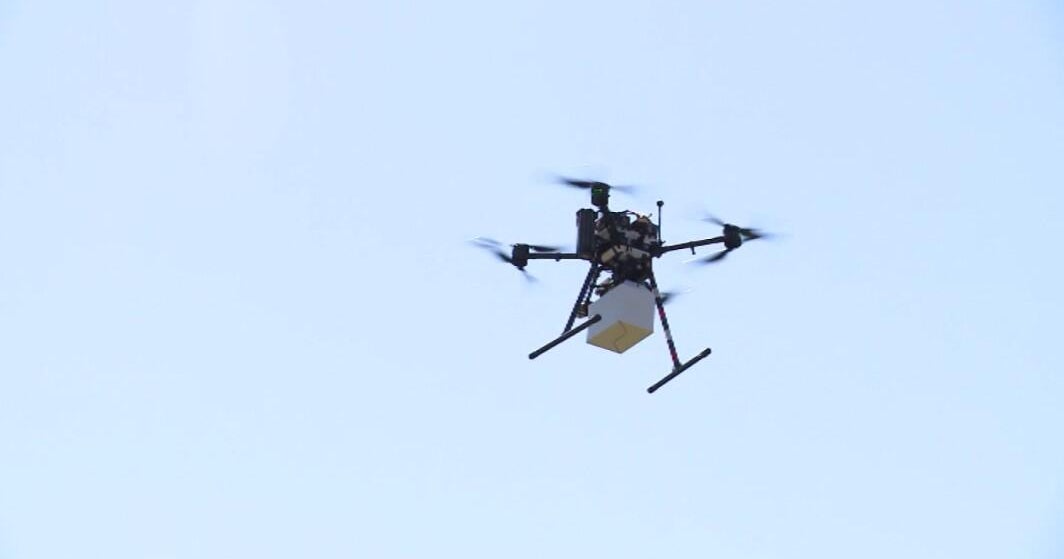Accessing medication can be a significant challenge for residents in some communities on Maryland’s Eastern Shore. For instance, those living on Smith Island rely solely on ferry services for their prescription deliveries, making it difficult for them to obtain essential medicines.
To address this issue, researchers from the University of Maryland are piloting an innovative drone delivery program designed to streamline access to medications. This initiative offers the potential for faster and more reliable deliveries, particularly in isolated areas. A recent visit by WJZ provided an in-depth look at this emerging technology in action.
Enhancing Medication Access
In Crisfield, local residents are becoming familiar with the sight of drones traversing the skies, each carrying essential packages. For Susan Heath, the experience was a refreshing change from the traditional pharmacy visit. “It was different than going to the pharmacy,” she shared, noting the unique nature of having medication delivered by drone.
Although Heath has easy access to Marion Pharmacy, she recognizes that this service could be invaluable for others in her community. “Sometimes you can’t get to the pharmacy when you need to get to the pharmacy, and then the drone will be able to drop stuff off and be much better,” she explained. Heath highlighted the importance of this service for her neighbors, particularly for the elderly and those with mobility issues, stating, “We have a lot of elderly that can’t get out… we have other infirmed that just can’t get out. This would be wonderful to have it dropped in there.”
Testing the Drone Program
Crisfield serves as a pivotal testing ground for the University of Maryland’s Medical Delivery Pilot Program, which is being managed by the university’s UAS Research and Operations Center (UROC) in collaboration with the company Drone-Up.
Each drone is programmed with specific drop-off locations to ensure safe and efficient deliveries. Drone-Up oversees the operation, ensuring that the drone navigates without obstacles and manages delivery completions seamlessly before returning to base for the next task.
The university is gathering essential data to assess the cost-effectiveness of drone deliveries for local pharmacies like Marion, which already provides transportation for prescriptions to some of its patients. One of the key goals is to extend the service over the Chesapeake Bay to reach Smith Island, where existing ferry services are the only means of medication delivery. The current pilot drone weighs about 55 pounds, while the one planned for Smith Island is anticipated to weigh around 65 pounds.
Addressing Medication Access Challenges
John Slaughter, the director of UROC, explained that discussions regarding this program began several years ago. The initiative gained momentum with a federal grant awarded to Maryland in 2024, which facilitated the development of drone delivery capabilities for healthcare.
Through his work, Slaughter has gained insights into the access challenges faced by Smith Island residents, emphasizing the critical nature of timely medication delivery. “What you wind up with is this problem with compliance with those medical programs,” he noted. “When that happens, people get sick. People wind up in the hospital, and so forth.”
Currently, the ferry service delivers medications to Smith Island once per day; however, adverse weather and other factors can disrupt deliveries for extended periods. Slaughter was careful to clarify that the intention of the drone project is not to replace the ferry services, but rather to provide an additional delivery option. “We know the boats are running and that’s established and that works,” he stated. “But there’s times they can’t go. We want to stack on top of that, make sure people get their meds. If there’s an urgent case, then potentially we can help with those kinds of things.”
Future Plans for the Drone Program
The next phase of the pilot program will involve conducting test deliveries to Smith Island. The University of Maryland is collaborating with the State Department of Planning as part of this important research effort.
In a significant development for the drone delivery sector, the Federal Aviation Administration (FAA) has recently proposed new rules aimed at easing restrictions on drone package deliveries. This proposal is currently open for public comment, hinting at a burgeoning future for drone use in various sectors, including healthcare delivery. As these innovations unfold, communities with limited access to medication may benefit greatly, with drones poised to bridge the gap and ensure timely care for residents in need.






